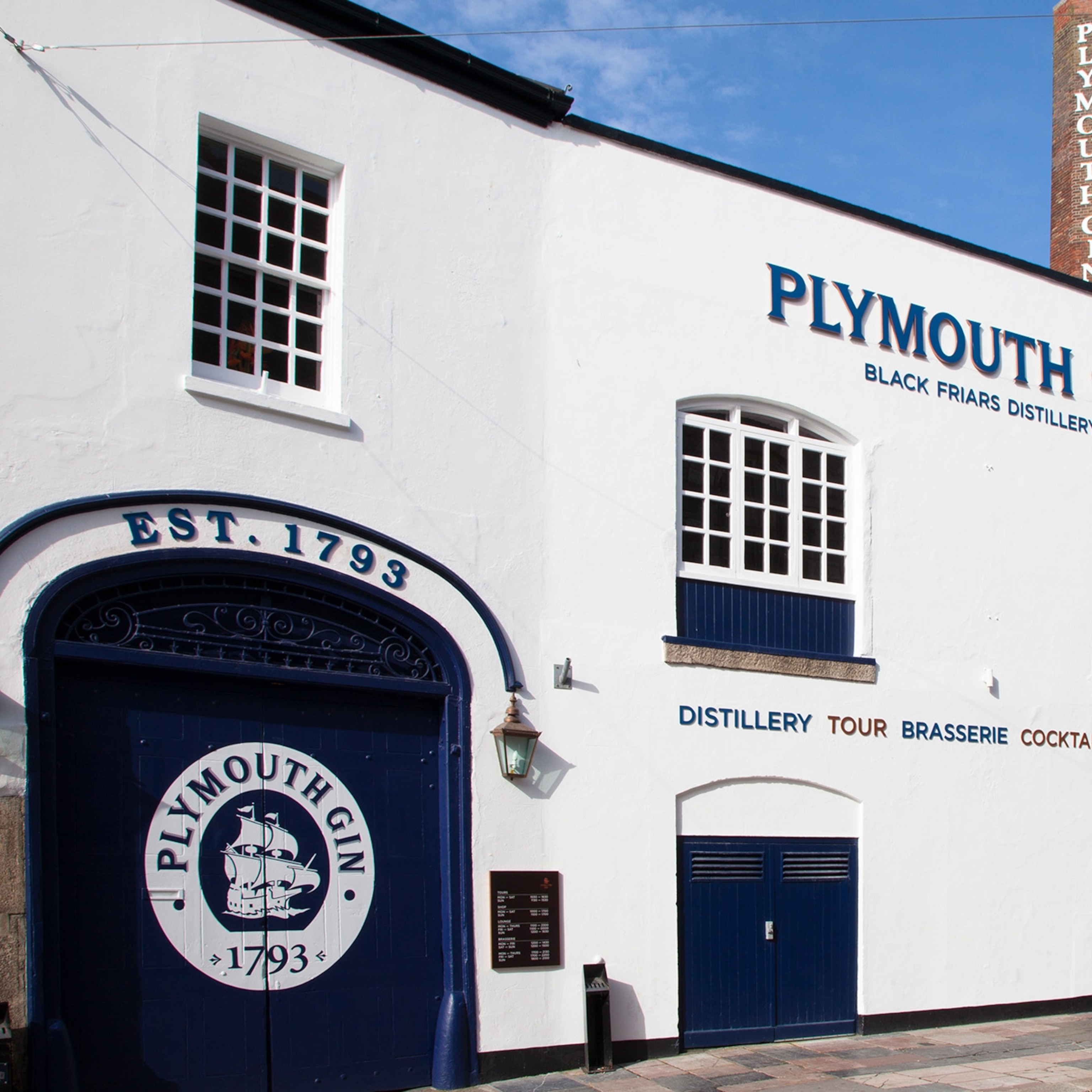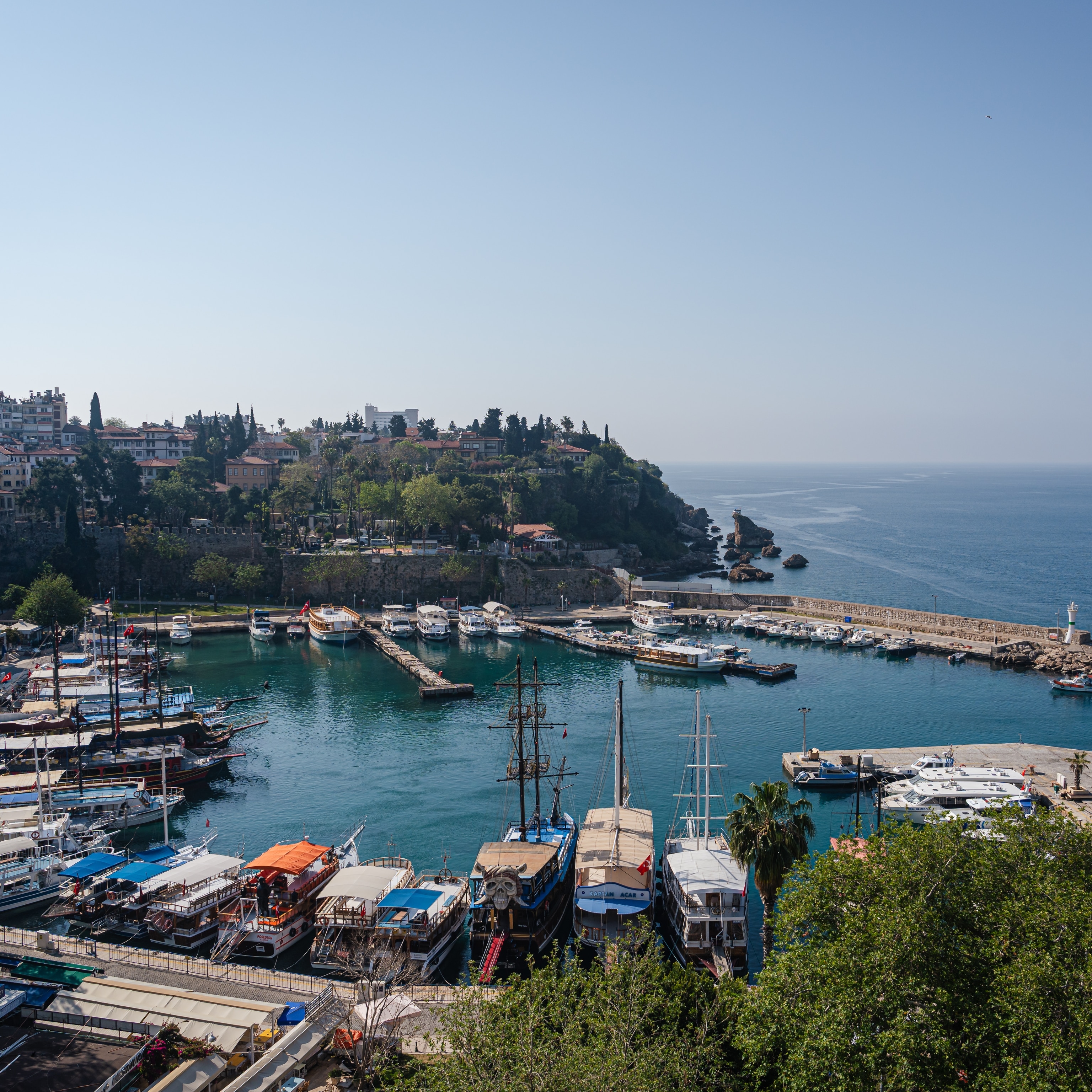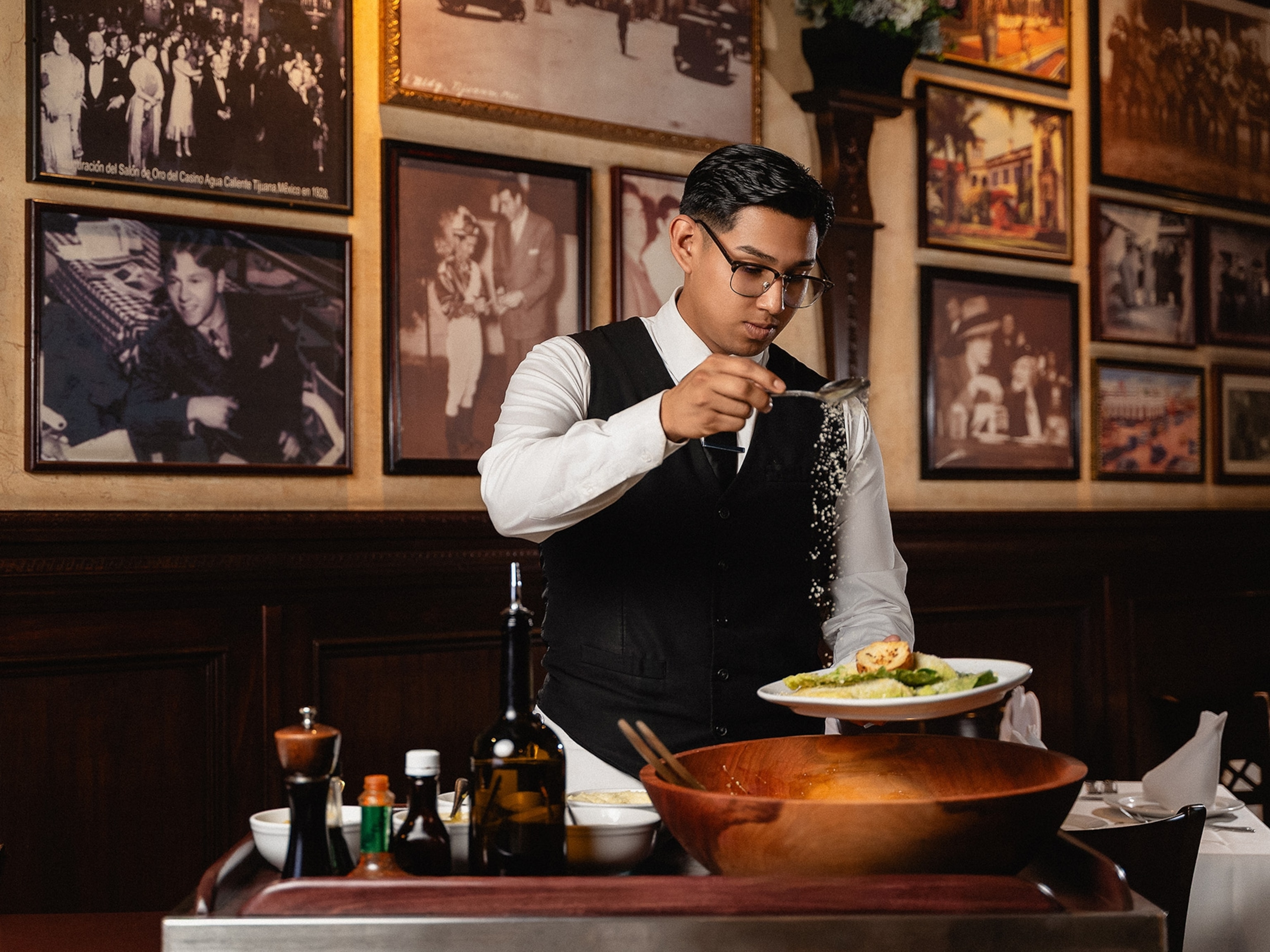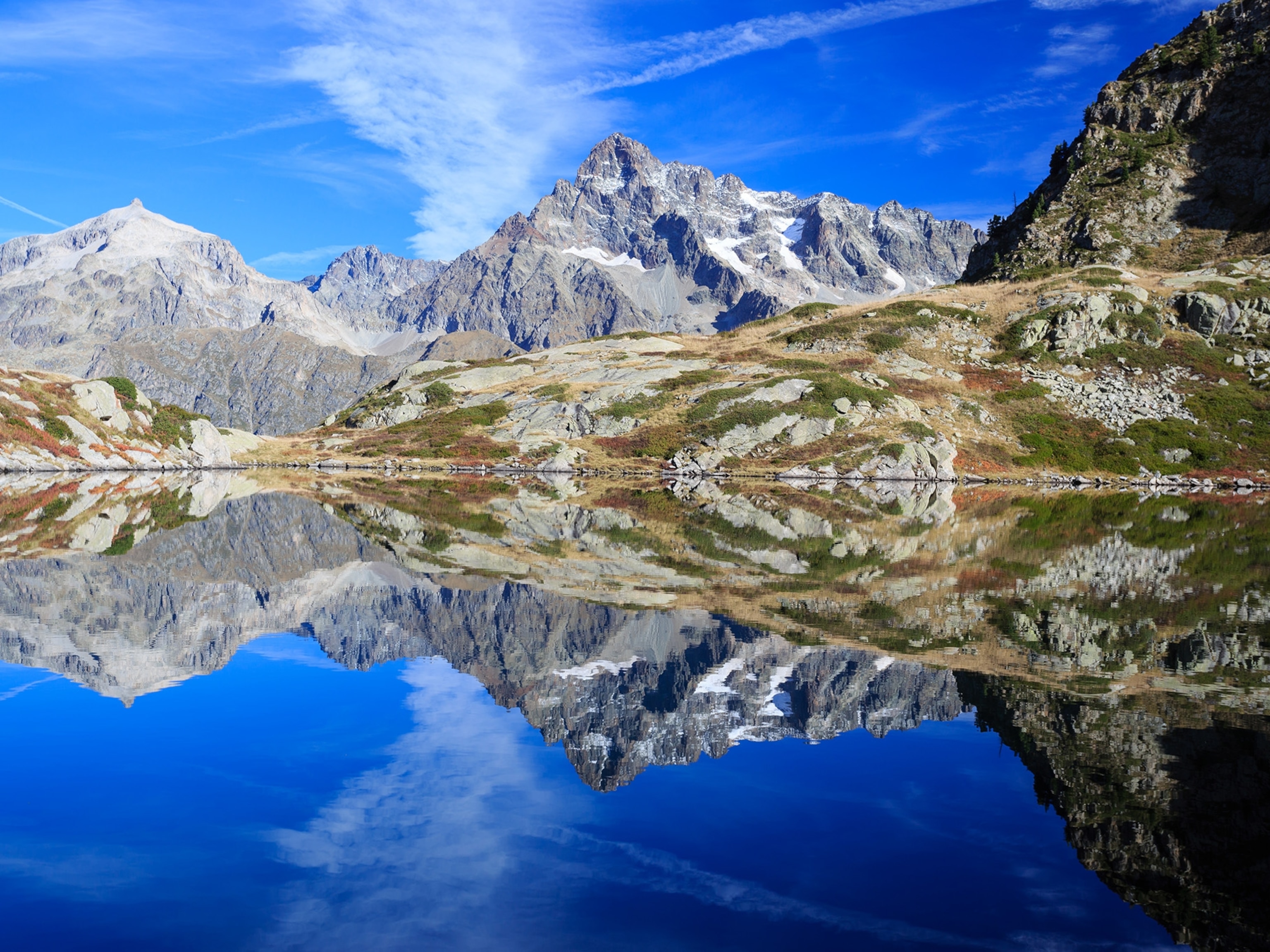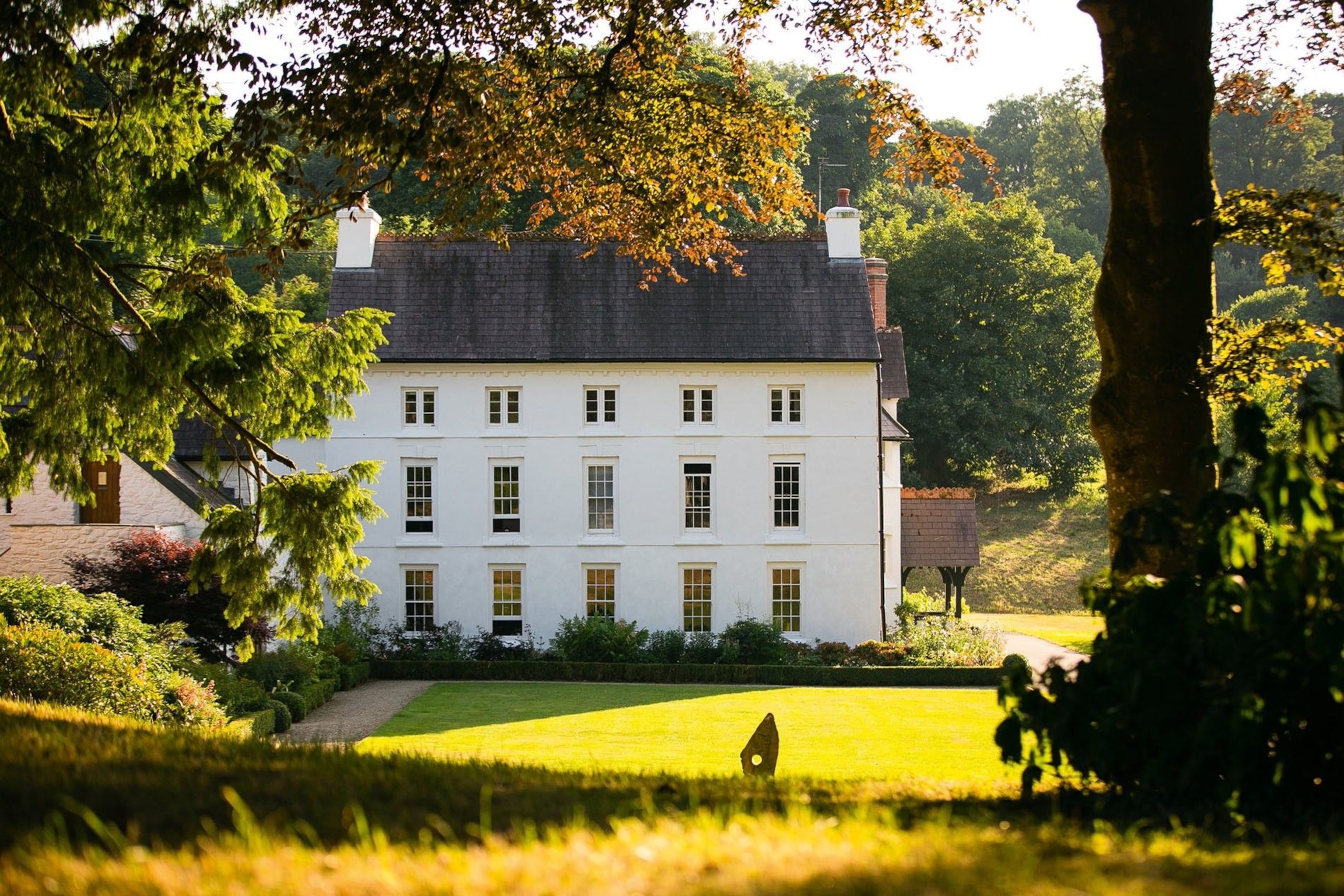
A taste of Pembrokeshire, from local gin to crab rarebit
Across the Welsh county of Pembrokeshire, producers and chefs are upping their game, elevating fresh, seasonal and local ingredients to the very top of the menu.
The brew with a view: Runwayskiln
High on a clifftop, in a far-flung corner of west Wales, a small window looks out over a vast, wild landscape. Barley fields stretch towards the coast, where jagged cliffs drop into the shimmering sea. On the horizon, I can just make out the golden strip of Marloes Sands and, beyond that, Skokholm island, a popular hangout for puffins and seals.
I could happily look out of the window for hours, but over on this side of the glass is Runwayskiln, and chef Charlie Langrick’s innovative cooking.
Along with his partner Claire Pepperell, Charlie updated this former farm (more recently a youth hostel) by converting one of the black-timbered barns into a cafe, and another building into guest accommodation. The property sits right on the winding Pembrokeshire Coast Path, and while it’s National Trust-owned, you won’t find the regular tearoom staples.
“We want to offer simple, natural food that’s on a par with the standard of the landscape around us,” Charlie says. “Pembrokeshire has always had excellent beaches, but until recently, few places offered fresh, quality food. That’s now changing — people are raising their game.”
Despite the changes the pair have made, the building’s history is still visible in places: benches are made from youth hostel bunkbeds, while iron rings on the wall are a remnant of its past purpose as a piggery.
The menu at Runwayskiln — named after the Runwa family, who had a kiln for their beer-brewing business here in the 18th century — draws on fresh, local produce and changes with the season, leaning heavily towards vegetables. Cauliflower pakoras are served with pickled slaw; frittatas are flavoured with wild garlic and garden rosemary; and fig and walnut focaccia is topped with local goat’s cheese and wild honey. “We want our food to be ingredient-led rather than technique-led,” Claire says, topping up my cup of tea. “It means that the emphasis is on the quality of the items on your plate.”
Charlie — who is head chef throughout the season (generally March-December) and serves up to 150 covers per sitting — whips up a plate of carrots on sourdough toast for me. It’s heavenly. The slender, lightly grilled carrots are ultra-fresh, having been pulled out of the ground just hours ago at Springfield Farm, six miles down the road.
“The vegetables are picked in the morning, and half an hour later they’re in our kitchen being prepped,” Claire says.
A frittata is just as delicious (“it’s all about having enough onions, and cooking them slowly,” Charlie explains) and I also polish off a slice of rhubarb cake, made with polenta and goat butter that adds extra tang. Then it’s back to that view — or outside into that windswept landscape to walk it all off.
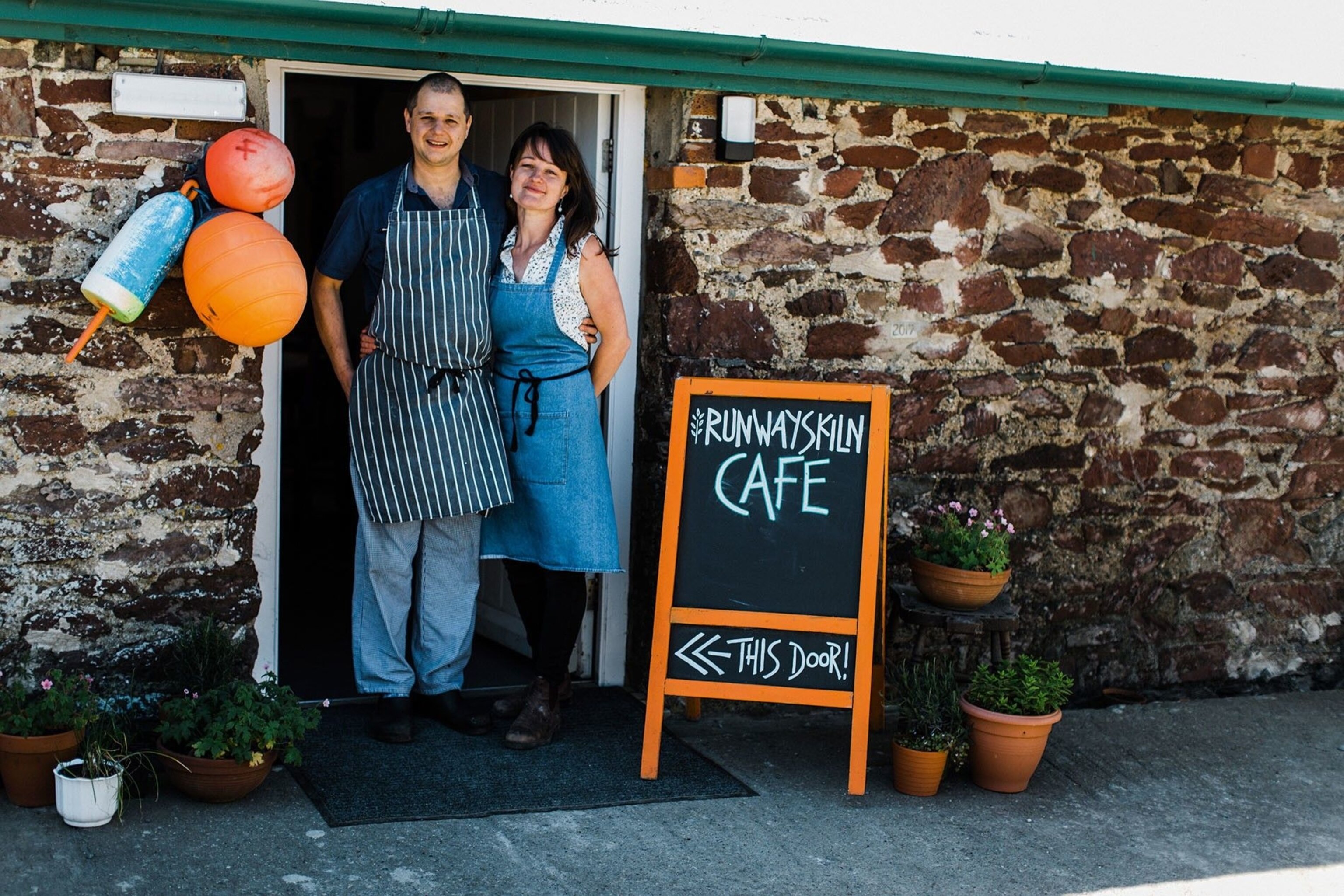
The local tipple: St Davids Gin & Kitchen
Decapitation isn’t the usual topic of conversation over a splash of gin. But St Davids Welsh Dry Gin isn’t your usual spirit. “When we went to Ramsey Island to forage for botanicals, we discovered an abundance of water mint,” says Neil Walsh, owner of St Davids Gin & Kitchen. Legend has it that the island, just over half a mile off St David’s Head, is where the sixth-century hermit Saint Justinian was beheaded. “They say that water gushed up from the ground where his head fell,” Neil adds. “The spot became a healing well and is now one of the few areas on the island where water mint flourishes.”
The mythology alone has sold me on a taster, despite the fact it’s only just hit 11am. The crystal-clear liquid is fresh yet warming on the back of my throat. As I sip, I study a map of suppliers on the wall. The restaurant focuses on locally sourced produce — such as fillets of Welsh Black beef from St Davids, and lobster and crab from nearby Solva — with most ingredients travelling less than three miles from source to plate.
But it’s the gin that’s really caught my attention. As well as water mint, Neil also found ancient juniper bushes on Ramsey during one of his foraging trips. The plant is at risk from berry-loving rabbits and coastal erosion, so to help, Neil has devised an eight-year plan to propagate juniper cuttings on the mainland, then gradually reintroduce them to the island.
Then there are the birds. Ramsey Island is an RSPB-owned nature reserve, home to peregrine falcons, breeding seabirds and flocks of choughs. The latter, with their fiery red beaks and legs, are emblazoned on the labels of the gin bottles as a reminder that 5% of profits go towards RSPB projects on the island. The first two editions of gin funded a UV water-filter tap, helping to cut down on single-use plastic bottles. “We’re having a positive impact and getting some booze out of it at the end,” Neil says. “What more could you want?”

The sustainable smokery: Llys Meddyg
I smell the smoke shed before I see it. There’s no fire today, but the slightly sweet, woody scent still hangs in the air.
This little shack in the pretty, daffodil-dotted garden at Llys Meddyg, a restaurant with nine rooms in Newport, is where Ed Sykes and his team smoke their own salmon. Beneath a blossoming cherry tree, Ed tells me that the smokery was born of a desire to add value to the local catch.
“We all want to look after our next-door neighbours,” he says. “But after 12 months, I was still struggling to get a consistent supply of fish. I realised that the only way of getting a reliable source of sustainable fish for our restaurant was through sustainable farming.”
Inside, the wood-fired oven is ablaze and the first diners are arriving at candlelit tables. Parts of the house — which has served as everything from a Georgian coaching inn to a doctor’s surgery — date back to the 14th century, but the restaurant has a modern feel, its dark walls adorned with bright paintings. I take a seat at a table overlooking the garden, where dahlias and roses were grown and sent to Covent Garden market during the post-war years. Now the soil is used for growing fresh veg and herbs for the kitchen, and I spot lettuces, onions and kale in raised beds.
The menu delivers seasonal produce in unexpected ways. Among the starters are cauliflower finessed with wild garlic and toasted seeds; torched mackerel with carrots in a maple and sesame glaze; and the house-smoked salmon, which tastes as exquisite as it looks. It comes adorned with slivers of fresh orange, pickled fennel and walnut, adding a satisfying crunch.
Pointed cabbage infused for more than 24 hours with miso is a highlight of the mains, leaving me wondering how this humble vegetable can taste quite so good. The answer, Ed believes, is in its seasonality. “Eating seasonally means you’re eating food that belongs to the landscape — it’s fresh, and tastes a hell of a lot better,” he says.

The fine dining restaurant: Fernery, Narberth
I’m sitting in front of a roaring fire, surrounded by antique furniture and tapestries, a champagne cocktail in hand. A waitress lays down a plate of canapes before floating back into the kitchen. The Grove hotel’s AA Rosette-awarded restaurant, Fernery, serves some of the finest food in Pembrokeshire.
“Using ingredients from our kitchen garden is important, as it helps keep the dishes as fresh as possible,” executive head chef Dougie Balish tells me during the relative quiet between services. “I’m classically trained, but unusually my menu isn’t too rich.”
I sit down to the tasting menu, which starts with sourdough rolls that are so light and crispy they feel like Yorkshire puddings. They’re followed by a wafer-thin waffle of 36-month-aged parmesan. Each indentation of the waffle is filled with either parmesan cream, anchovies, Welsh air-dried ham or salsa verde. It’s a colourful chequerboard, with flavours of salty fish, cheese and fresh herbs from the garden.
The dishes all look like works of art and, although they’re petite (there are 10 courses to get through, after all), they pack a real punch. A single, hand-dived Scottish scallop sits on a bed of truffle and madeira sauce and comes topped with homegrown chives; Snowdonia venison is served with blueberries grown in the kitchen garden; and thyme has been crystallised by the chefs and carefully positioned atop honeycomb filled with sweet ice cream and earl grey parfait. These are all unusual — and delicious — flavour combinations, but it’s the use of ingredients from the grounds that imbues the menu with a very precise sense of place.
Pembrokeshire originals
Welsh cakes
Cooked on a griddle, Welsh cakes sit somewhere between scones and biscuits, and can be found all over Pembrokeshire. But at MamGu Welshcakes coffee shop, the traditional treat has been given a modern twist. There are 14 flavours on offer, including lemon; dark chocolate and orange; and leek and cheese. They’re sold online and in store at MamGu’s cosy cafe in Solva. mamguwelshcakes.com
Sea salt
With its gin-clear water, the sheltered cove of Cwm-Yr-Eglwys on the Dinas Island peninsula is just the spot for hand-harvesting sea salt. Sherill Evans and Josh Wright, of Pembrokeshire Sea Salt, collect seawater in buckets, then filter and heat it until it crystallises. The larger flakes are saved for chefs across Wales, while the smaller flakes are flavoured with everything from saffron to wild garlic. pembrokeshireseasalt.co.uk
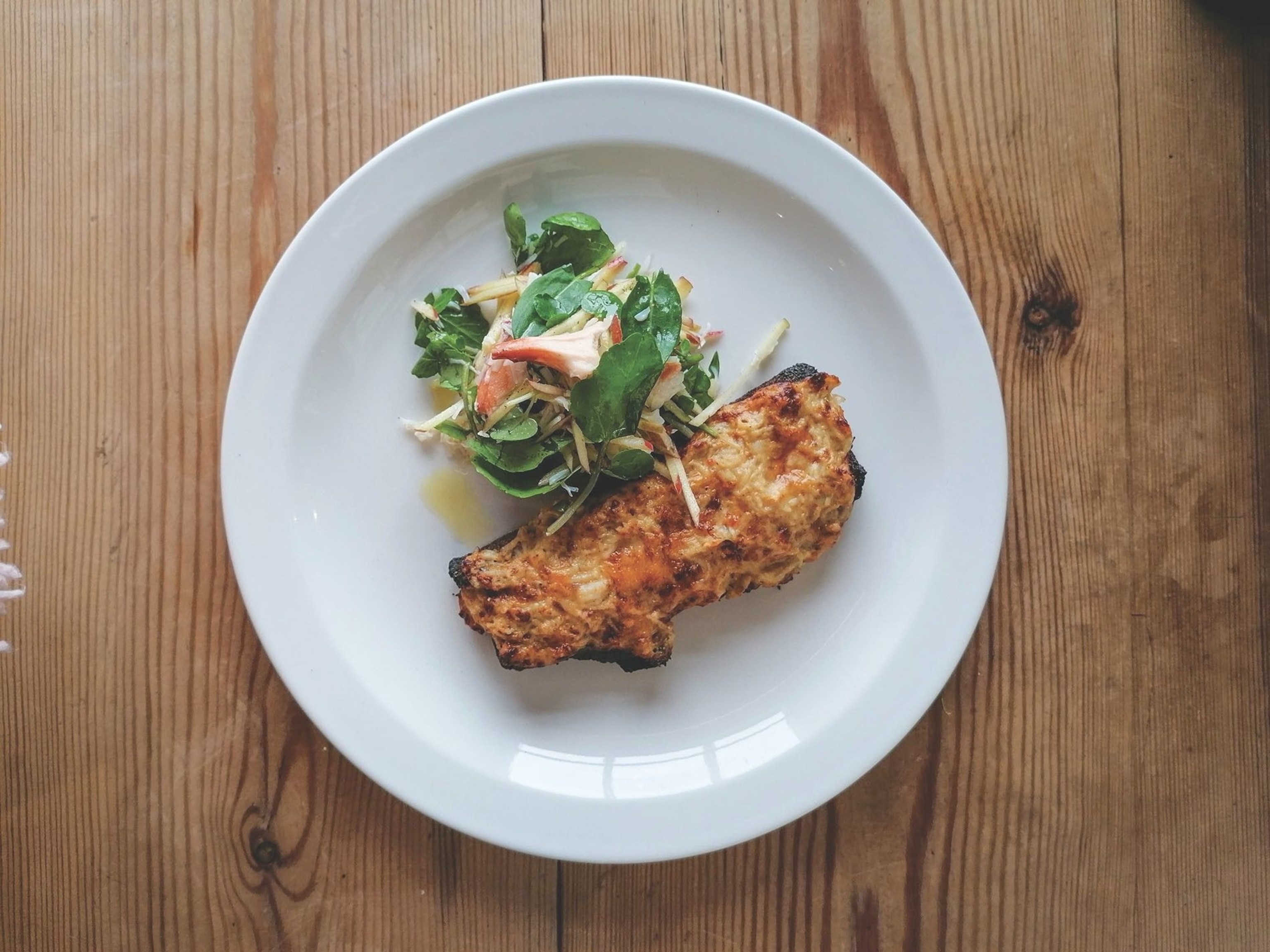
How to make it: Charlie Langrick’s Pembrokeshire devilled crab rarebit with crabmeat salad
Be sure to use fresh crab for this recipe, in which the rich brown crabmeat in the rarebit contrasts with the sweet white meat of the zesty salad. Classic rarebit recipes use beer, but a dry cider works well here — you only need a splash, so you can save the rest to enjoy over lunch.
Serves: 4
Takes: 20 mins
Ingredients
10g butter
10g plain flour
125ml good-quality, dry cider (Charlie uses Gethin’s Original Cyder)
1 tbsp Dijon mustard
½ tsp cayenne pepper
80g mature cheddar, grated
200g fresh brown crabmeat
4 slices of sourdough bread
For the salad
200g white crabmeat
1 large braeburn apple, finely grated
bunch of watercress
squeeze of lemon juice
1 tbsp light olive oil
Method
1. Melt the butter in a pan set over a low heat, then add the flour and stir to form a roux. Add the cider a little at a time, mixing until smooth. Cook gently for 2 mins, stirring, then add the mustard, cayenne and cheddar, plus a little salt, to taste. Leave to cool slightly, then mix in the brown crabmeat.
2. Grill one side of the bread slices. Thickly spread the other side with the crabmeat mix and grill until it’s golden and bubbling.
3. For the salad, toss the white crabmeat with the apple and watercress, then dress with the lemon juice and olive oil.
How to do it
Travel by rail from London Paddington to Haverfordwest via Cardiff, or to Pembroke via Swansea.
Where to stay
The Grove has B&B doubles from £180 a night.
More info
Food & Drink Wales: businesswales.gov.wales/foodanddrink
Published in Issue 9 (summer 2020) of National Geographic Traveller Food
Follow us on social media
Facebook | Twitter | Instagram
